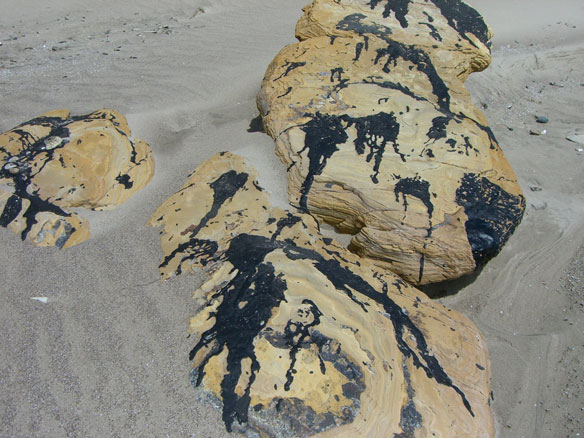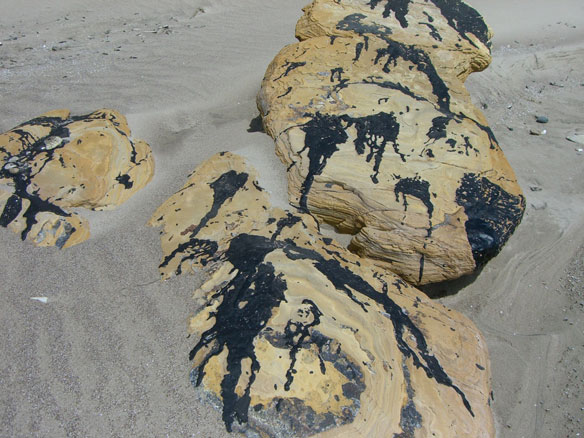
Photograph: © SAF
Excerpts;
The COSCO Busan oil spill occurred at 08:30 UTC-8 on November 7, 2007 between San Francisco and Oakland, California, in which 53,569 USgal (202,780 L) of IFO-380 heavy fuel oil, spilled into San Francisco Bay after the container ship M/V COSCO Busan struck Delta Tower of the San Francisco – Oakland Bay Bridge in thick fog.
The spill released tens of thousands of gallons of heavy fuel oil into the bay, leaving a dirty bathtub ring of oil along its rugged shores.
The spill affected more than 100 miles of coastline.
Oil is an intimidating mixture of thousands of compounds, and every oil is different. All petroleum-based fuels, including the gasoline we pump into our cars, begin with crude oil that is pulled from the ground and processed at a refinery, where it is heated and separated into the different products we use. As crude oil is heated, lighter compounds evaporate and are collected and sold as gasoline, jet fuel, kerosene, diesel fuel, and lubricating oil (motor oil)…
The author looks at potential toxicity over time to the various compounds within an oil, once released into the environment. How these so-called “weathering” processes affect different compounds depends on the individual compounds’ physical characteristics, including their size and chemical structure…









